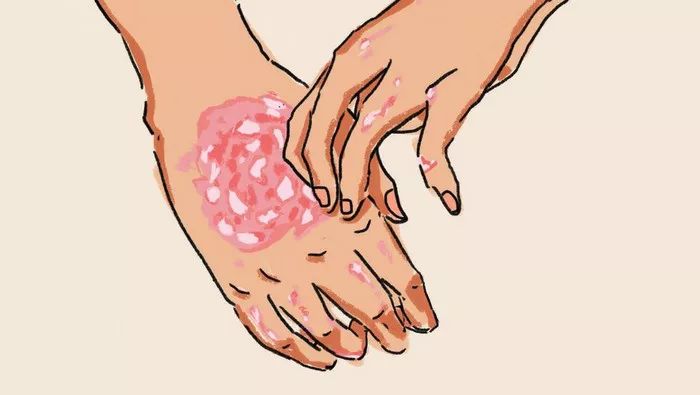Psoriatic arthritis (PsA) is a chronic inflammatory condition that affects individuals with psoriasis, a skin disease characterized by red, scaly patches. PsA involves both joint and skin symptoms, and early detection is crucial for managing the disease effectively. This article delves into the initial symptoms of psoriatic arthritis, helping patients and healthcare providers recognize the early signs and take appropriate actions.
Understanding Psoriatic Arthritis
Psoriatic arthritis is an autoimmune disease, meaning the body’s immune system mistakenly attacks its tissues. This leads to inflammation in the joints and other areas. Approximately 30% of individuals with psoriasis develop PsA, and the condition can range from mild to severe. While the exact cause of PsA is not known, genetic, environmental, and immunological factors play a role in its development.
The Importance of Early Diagnosis
Early diagnosis and treatment of PsA are critical in preventing joint damage and maintaining a good quality of life. The progression of PsA can lead to permanent joint damage and disability if not managed properly. Recognizing the first symptoms can help in seeking timely medical intervention, which may include medications, lifestyle changes, and physical therapy.
First Symptoms of Psoriatic Arthritis
Joint Pain and Stiffness
One of the most common early symptoms of PsA is joint pain and stiffness, particularly in the morning or after periods of inactivity. This stiffness can last for more than 30 minutes and may improve with movement. The pain is usually symmetrical, affecting the same joints on both sides of the body, but it can also be asymmetrical.
Swelling and Tenderness
Swollen and tender joints are also indicative of PsA. The swelling can cause the joints to appear larger than usual, and they may feel warm to the touch. This symptom is often accompanied by tenderness, making it painful to touch or move the affected joints.
Dactylitis (Sausage Fingers or Toes)
Dactylitis, characterized by the swelling of an entire finger or toe, giving it a sausage-like appearance, is a hallmark symptom of PsA. This swelling is due to inflammation of both the joints and the tendons, and it can occur in multiple digits at once. Dactylitis can be painful and may interfere with daily activities.
Nail Changes
Nail changes are common in individuals with PsA and can be an early sign of the disease. These changes include pitting (small depressions in the nails), onycholysis (separation of the nail from the nail bed), and nail thickening. The nails may also develop ridges or become discolored.
Lower Back Pain
Lower back pain, particularly in the sacroiliac joints (where the spine connects to the pelvis), is another early symptom of PsA. This type of pain is known as sacroiliitis and can be accompanied by stiffness and limited range of motion. It may worsen with prolonged sitting or standing.
Eye Inflammation
Eye inflammation, or uveitis, can be an early sign of PsA. Symptoms include redness, pain, light sensitivity, and blurred vision. Uveitis requires prompt medical attention to prevent complications, such as vision loss.
Fatigue
Fatigue is a common but often overlooked symptom of PsA. Chronic inflammation in the body can lead to feelings of tiredness and a lack of energy. This fatigue can be debilitating and affect the overall quality of life.
Enthesitis
Enthesitis refers to inflammation at the sites where tendons or ligaments attach to the bone. This can cause pain and tenderness in areas such as the heels, elbows, and the bottom of the feet. Enthesitis is a distinctive feature of PsA and can help differentiate it from other types of arthritis.
Reduced Range of Motion
As PsA progresses, inflammation and joint damage can lead to a reduced range of motion in the affected joints. This can make it difficult to perform everyday tasks and impact the individual’s ability to work or engage in recreational activities.
Skin Symptoms
While skin symptoms are typically associated with psoriasis, they can also be an early indicator of PsA. The presence of red, scaly patches on the skin, particularly in areas such as the scalp, elbows, and knees, can precede the development of joint symptoms. It is important for individuals with psoriasis to monitor their joint health closely.
Diagnosing Psoriatic Arthritis
Diagnosing PsA can be challenging, as its symptoms overlap with other types of arthritis, such as rheumatoid arthritis and osteoarthritis. A comprehensive evaluation by a healthcare provider is essential for an accurate diagnosis. This may include:
SEE ALSO: The Best Body Creams for Psoriasis
Medical History and Physical Examination
A detailed medical history and physical examination are crucial in diagnosing PsA. The healthcare provider will ask about symptoms, family history of psoriasis or arthritis, and perform a thorough examination of the skin, nails, and joints.
Imaging Studies
Imaging studies, such as X-rays, MRI, or ultrasound, can help identify joint damage, inflammation, and other characteristic features of PsA. These tests can also rule out other conditions that may cause similar symptoms.
Blood Tests
Blood tests can help detect markers of inflammation and rule out other types of arthritis. While there is no specific blood test for PsA, tests such as erythrocyte sedimentation rate (ESR) and C-reactive protein (CRP) can indicate the presence of inflammation in the body.
Joint Aspiration
In some cases, joint aspiration may be performed to analyze the synovial fluid (fluid within the joints) for signs of inflammation or infection. This procedure involves inserting a needle into the joint to collect a fluid sample.
Managing Psoriatic Arthritis
While there is no cure for PsA, early diagnosis and treatment can help manage symptoms and prevent joint damage. Treatment options include:
Medications
Nonsteroidal Anti-Inflammatory Drugs (NSAIDs)
NSAIDs, such as ibuprofen and naproxen, can help reduce pain and inflammation in mild cases of PsA.
Disease-Modifying Antirheumatic Drugs (DMARDs)
DMARDs, such as methotrexate and sulfasalazine, can slow the progression of PsA and prevent joint damage.
Biologic Agents
Biologic agents, such as TNF inhibitors (e.g., adalimumab, etanercept) and IL-17 inhibitors (e.g., secukinumab), target specific components of the immune system to reduce inflammation and prevent joint damage.
Corticosteroids
Corticosteroids can be used to manage severe inflammation and flare-ups of PsA. They can be taken orally or injected directly into the affected joints.
Physical Therapy
Physical therapy can help improve joint function, reduce pain, and enhance overall mobility. A physical therapist can design a personalized exercise program to strengthen the muscles around the joints and improve flexibility.
Lifestyle Modifications
Healthy Diet
A healthy diet rich in anti-inflammatory foods, such as fruits, vegetables, and omega-3 fatty acids, can help manage PsA symptoms. Avoiding processed foods and sugars can also reduce inflammation.
Regular Exercise
Regular exercise can help maintain joint function, reduce stiffness, and improve overall well-being. Low-impact exercises, such as swimming, walking, and yoga, are particularly beneficial for individuals with PsA.
Stress Management
Stress can exacerbate PsA symptoms, so finding effective ways to manage stress is important. Techniques such as meditation, deep breathing exercises, and mindfulness can help reduce stress levels.
Assistive Devices
Assistive devices, such as splints, braces, and orthotic shoes, can help support the joints and reduce pain during daily activities.
Conclusion
Recognizing the first symptoms of psoriatic arthritis is essential for early diagnosis and effective management of the disease. Joint pain, stiffness, swelling, dactylitis, nail changes, lower back pain, eye inflammation, fatigue, enthesitis, reduced range of motion, and skin symptoms are all potential early indicators of PsA. If you experience any of these symptoms, it is important to seek medical attention promptly. With appropriate treatment and lifestyle modifications, individuals with PsA can lead fulfilling lives and minimize the impact of the disease on their daily activities.
Related Topics:


























